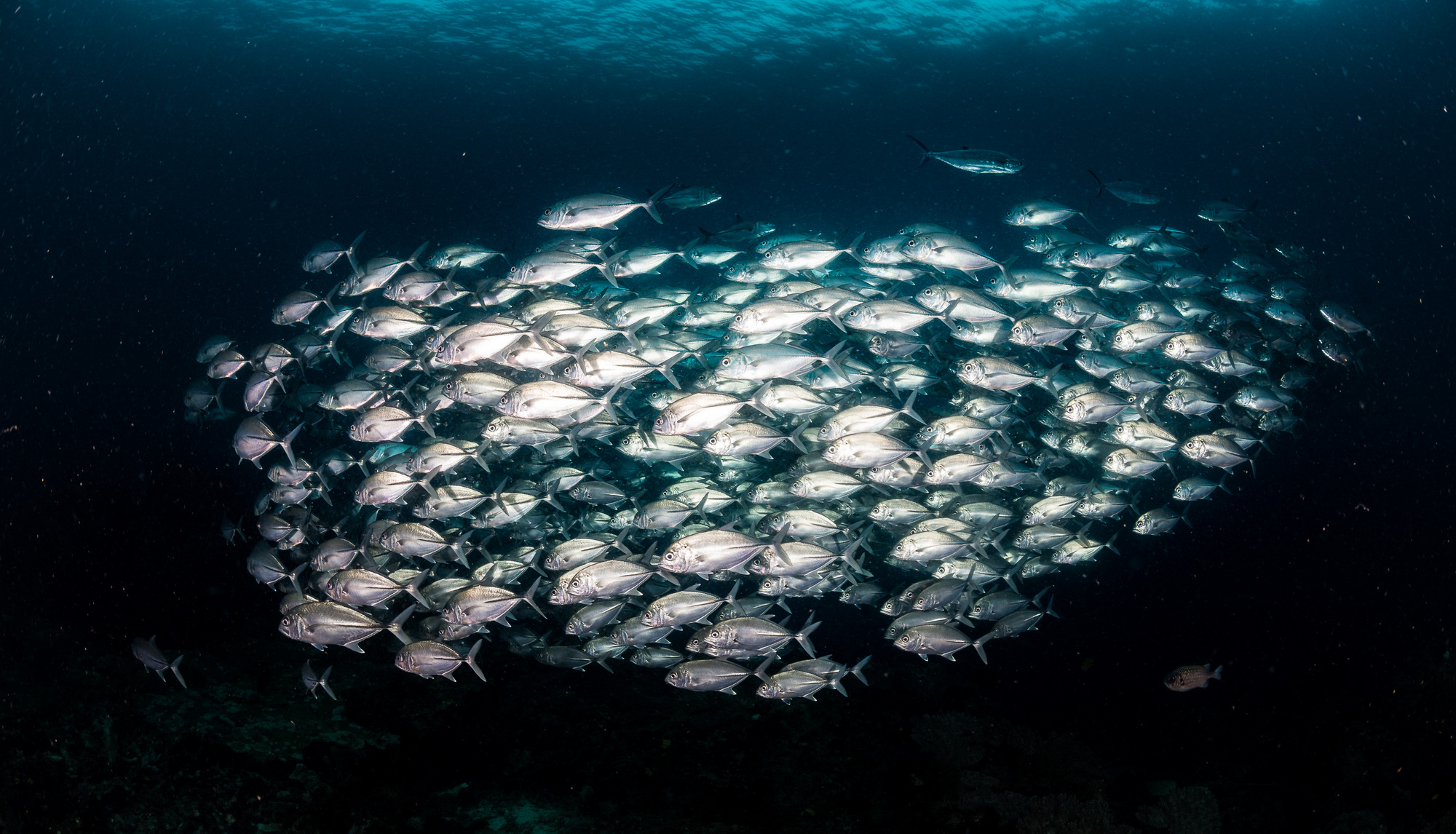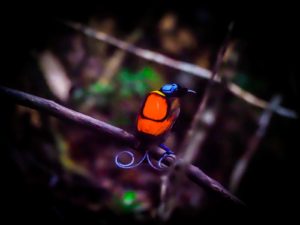Coral Types
Learn more
Raja Ampat form a different perspective. We have two options which incorporate the area surrounding us.
We have two single kayaks and one double kayak available. You can take them out for half day (9:00 – 12:00 or 14:00-17:00) or full day (9:00-17:00).Note: For this tour it is advisable to bring binoculars, wear sandals that hold the foot (or trekking shoes), shorts, T-shirt, cap and insect repellent – optional snorkeling gear.Coral reefs are the foundation of a healthy ecosystem and allow for a diverse range of species. They are important because they provide shelter for many marine organisms, they provide nitrogen and other essential nutrients for marine food chains, they protect coastlines and they assist with nitrogen. If we do not protect these corals we could lose many species that rely on them, making The Coral Triangle all the more important.
Most people would guess a rock or a plant, but if you take a closer look you will discover that corals are actually animals. (Yes they are animals!)They are invertebrate animals belonging to the phylum Cnidaria and are related to sea anemones and jelly fish. You will find two types of coral, soft and hard. The unit of a coral is the polyp, an individual animal that grows and divides to form larger corals. Therefore the corals you see on a reef are rarely an individual animal but colonies of many polyps, all originating from the same first polyp
The anatomy of a single polyp consists of a cup-shaped body with a single, central opening surrounded by tentacles. This opening is both the mouth and the anus. Each polyp has a ring of tentacles around their mouth; with contain stinging cells called nematocysts.
At the base of a polyp you will find a hard protective limestone skeleton called a calicle, which forms the structure of coral reefs. A reef will start when a polyp attaches itself to rock on the sea floor after which it will divide into thousands of clones. The calicles connect to one another, creating colonies which act as a single organism.
As colonies grow over hundreds and thousands of years they will join other colonies forming what you see when diving, reefs.
Corals main source of food is zooplankton. During feeding the coral polyp will extend its tentacles out and wave them in the current catching zooplankton, bacterioplankton or other food particles.
Corals manly eat zooplankton; however they rely on small microscopic unicellular algae called zooxanthellae. The algae can be found within the inner skin of the coral. They are photosynthetic organisms which means they rely on sunlight, so they have a mutually beneficial relationship with the coral. During the day they provide their host with the organic carbon products of photosynthesis, providing up to 90% of their hosts energy needs for metabolism, growth and reproduction. In return they receive nutrients, carbon dioxide and an elevated position with access to sunshine.
By providing homes to a diverse variety of species they are the fundamental sources of life in the ocean. Environmental changes pose as a greater threat to corals which in turn threatens the species that live and rely on the corals. If we do not protect coral or change our ways to reduce the impact we have on the oceans, we could lose many species that rely on them, making the Coral Triangle all the more important.
Hard corals grow in colonies and are the architects of coral reefs. They absorb calcium carbonate (known as limestone) from the water and use it to build their hard skeleton which will protect their soft body. A common characteristic of the phylum cnidaria is the presence of stinging cells called nematocysts. They are located in their tentacles and used for selfdefense and catching prey.
Some major families you will encounter while diving with us are:
- Branch Coral (Acropora)
- Acropora has 149 different species
- Some species you may know are Staghorn coral, Elkhorn corals and Laminar corals.
- It is one of the major reef corals responsible for building the immense calcium carbonate substructure that supports the thin living skin of a reef.
- Depending on the species and location, Acropora may grow as plates/tables or broad branches.
- Acropora corals are colonies of individuals polyps, which are about 2 mm across and share tissue and a nerve net. The polyps can withdraw back into the coral in response to movement or disturbance by potential predators, but when undisturbed they protrude slightly.
- The polyps typically extend further at night to help capture plankton and dissolved organic matter from the water.
- Massive and Incrusting Coral (Diploastrea heliopora)
- Commonly known as brain coral or honeycomb coral it is the only extant species in its genus.
- This species can form massive dome-shaped colonies of great size.
- The Corallites (the skeleton cup/covering) are plociod, round and closely packed and formed by extratentacular budding.
- The walls are distinctive and are not connected to each other which give the coral a smooth rounded surface and are usually cream or greyish brown in colour.
- Leaf Coral (Pavona cactus)
- Known as Cactus or potato chip coral
- Found in shallow reefs.
- Colonies of this species have irregular, two-sided fronds.
- The corallites house the polyps and are very shallow and form widely separated rows parallel to the fonds.
- The fronds may be clustered together in a super colony formed from one or more individual colonies and extending for several metres across the seabed.
- Hood Coral (Stylophora pistillata)
- Known as smooth cauliflower coral.
- It has broad, blunt ended branches and colonies become thinker and more submassive as they grow.
- The corallites are hooded and sunk beneath the general surface.
- Unique branching structure which resembles a pistal
- Most tolerant coral of environmental change.
- Colonies can be cream, pink, bluish or green.
Soft corals are structurally different from hard corals as they do not produce rigid calcium skeletons and do not form reefs. They contain structures within their tissues called spiracles that support their bodies. Additionally soft corals have eight fuzzy tentacles for feeding. They are mostly colonial. Their individual polyps combine to form larger structure. Visibly they resemble trees, bushes, fans , whips and grasses. Some common ones you can find in Raja Ampat:
- Stinging Hydroid (Aglaopheniidae)
- Colonial hydrocoral, azoothantelate and ahermatypic.
- Feathery and fern-like growth form.
- Cluster of stems with alternately arranged fine branches along.
- Branches bear secondary branchlets where tiny polyps are found.
- Free-swimming medusae larvae produced by sexual reproduction.
- Painful sting
- Leather Corals (Sinularia)
- Octocoral, ahermatypic and non-scleractinian.
- Most of them contain zoozanthelae.
- Fast settlers over available substrate, opportunists.
- Soft corals contain calcareus spicules to reinforce their structure.
- Three main genus dominate the shallow waters of the reef flats.
- Carnation Coral (Nephtheidae)
- Octocoral ahermatypic, both with and without zooxanthellae.
- Highly ramified, forming very colourful bushy colonies.
- Translucent body walls show reinforcing calcareous spicules.
- Colonies attached by a stout stem allow them to grow on steep slopes and shady overhangs.
- Sea fans & Whip corals (Subergorgia)
- Octocoral ahermatypic both with and without zooxanthellae.
- Solid, highly ramified and rod-like central core.
- Horny scleroprotein called gorgonin – gorgonacea.
- Grow in shallow walls, overhangs with strong water movement, perpendicular to the current or deeper and calmer habitats.
There are four types of reproduction for corals:
- Broadcast Spawning
- About three-quarters of all stony coral species are broadcast spawners.
- This is a synchronized event when many coral species release their eggs and sperm at the same time.
- The timing of this event in very important and occurs in response to multiple environmental cues.
- Brooding
- The reaming quarter of coral species are brooders.
- They disperse their larvae over shorter distance s from the mother colony.
- They have a high success rate in established colonies however do not contribute much to the overall growth of a reef.
- Budding
- A form of asexual reproduction
- New polyps bud off from parent polyps to expand or begin new colonies.
- When parent polyp reach a certain size and divide, budding occurs
- Fragmentation
- This occurs when a portion of a larger colony is broken off form the main colony during a storm
- The portion broken off will start new coral colonies genetically identical to the parent colony.
Success is only guaranteed if the portion is exposed to favorable growth conditions where it lands.
YOU MAY ALSO LIKE

FISH BIOMASS
Raja Ampat’s isolation and sparse human population have played a major role in keeping its reefs healthy, which overall have contributed to the biomass of fish you will discover on each dive or snorkel with us at Biodiversity.

The Top List of Species and Endemic Species
Your aquatic adventure must include the species that every visitor lists as the best, including, endemic species that can only be found in Raja Ampat, which continue to be added to the ever-new discoveries of more species

























